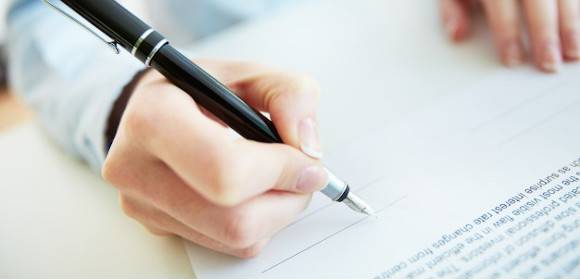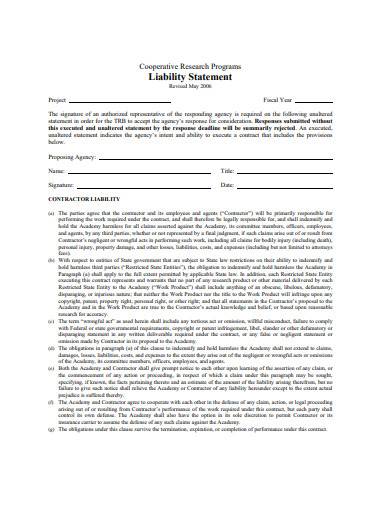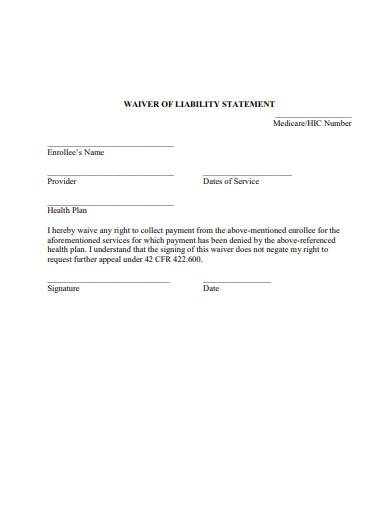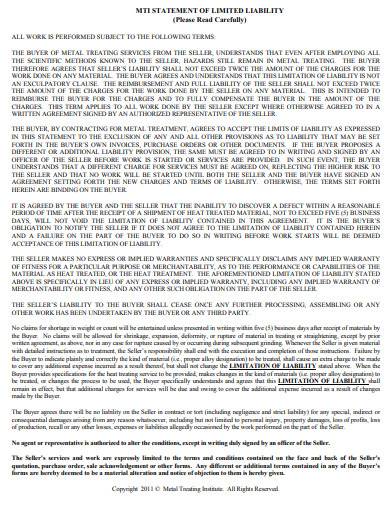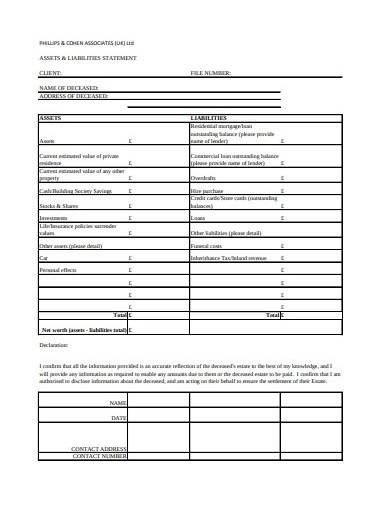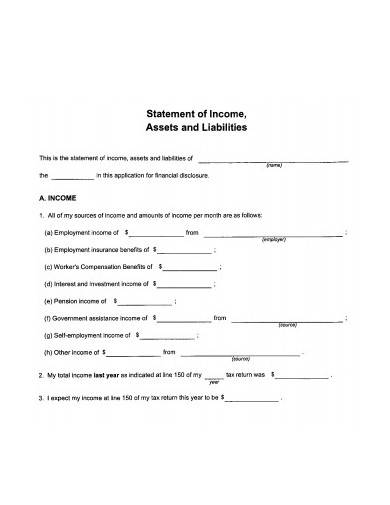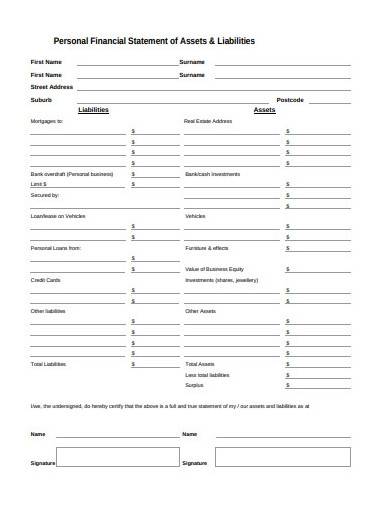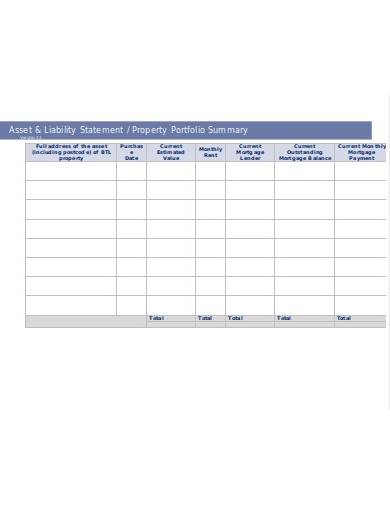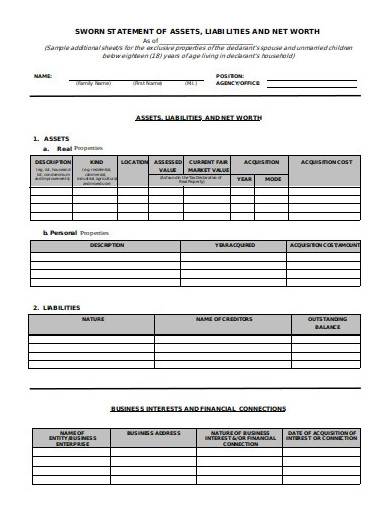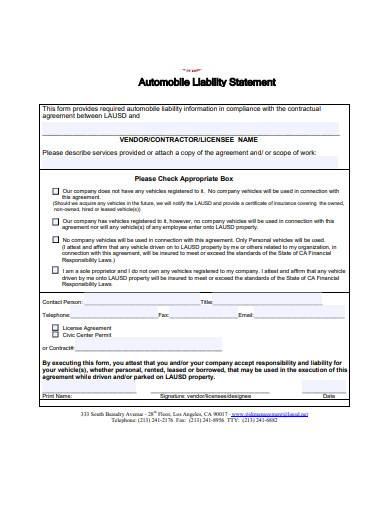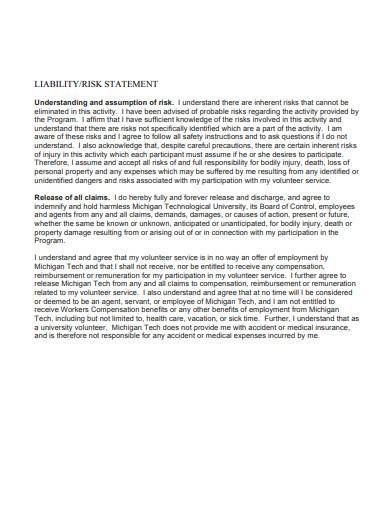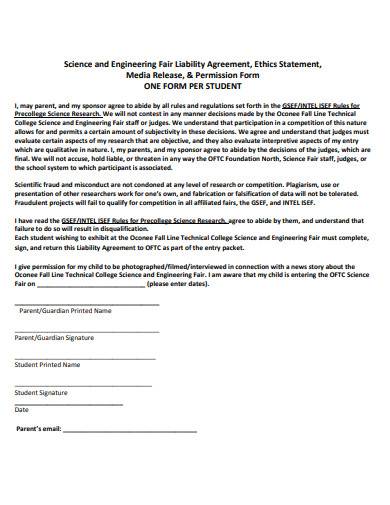A liability is simply defined as an obligation. These obligations can come from past transactions, especially those that are related to business. Liabilities are both tangible and intangible. Tangible liabilities are often associated with assets and they often go together in business statements. A liability statement holds a record of an entity’s obligations which makes it a valuable business document. In this article, you will get to know more about liability statements with the information provided below, as well as with the use of the downloadable samples and templates.
FREE 10+ Liability Statement Samples and Templates in PDF
1. Liability Statement Template
2. Waiver of Liability Statement Template
3. Statement of Limited Liability
4. Assets and Liabilities Statement
5. Liabilities Income Statement Example
6. Personal Financial Assets and Liability Statement
7. Property Assets and Liability Statement
8. Sworn Assets and Liability Statement
9. Automobile Liability Statement
10. Liability/Risk Statement Template
11. Science Fair Liability Statement
What Is a Liability Statement?
Two types of liability statements exist according to their use. The first liability statement is a document that details all of the obligations of an entity within a specific accounting period. As mentioned, it is part of an entity’s assets and liabilities statement. It forms one of the important business documents, together with a balance sheet and income statement. The second type is known as the waiver of liabilities statement. Unlike the former, a waiver of liabilities protects the entity from possible harm or accident brought about by business operations. You can say that it’s a type of not responsible for damage disclaimer. It is also called a liability disclaimer or liability waiver. It is often accomplished by completing a personal injury waiver form.
It’s easy to identify one statement from the other, so make sure you don’t make any mistakes when using them. They are only similar because of the word obligations, but their functions are totally different. You can quickly tell them apart, so you should not mistake one from the other.
How to Write a Liability Statement
Liability statements need not be long and complicated. Just like agreement samples, they just have to be straightforward and informative. Of course, there will be liability statements that must be comprehensive and lengthy. But it doesn’t mean that it’s more effective compared to the one-page documents. We’ve got here tips to share with you about making liability statement templates, and they are as follows.
1. Determine the Type of Liability Statement You Are Making
You should always start with determining whether you will make an asset and liability statement or if its a waiver of liabilities type of document. They contain exactly different information so you should make the right decision. For example, the contents of a general release of liability document would be different from that of a letter of discharge of responsibility. When you know what you need to make, it will help you prepare the necessary information and documents that you’ll need for the task ahead of you.
2. Know the Parts of the Liability Statement
You can’t possibly start to write something if you don’t know it’s parts. It’s just common sense to identify the parts and learn what each part contains. If you’re making a waiver of liability letter, then you’ll need to know what to put in it and how to position the contents appropriately. For example, the first paragraph of your letter is used to introduce yourself and state your purpose.
3. Always Use a Business Format
Well, you do mean business if you want to rid yourself of any liabilities. So it’s just right to make a business style letter. Use a professional tone and a professional greeting when writing your letter. That is even if you know or are close to the recipient. For example, “Dear Mr. Smith,” is preferred over “Dear Nancy.” Also, to make your overall letter business-like, add a letterhead if you have one. If not, write your address block the way you would in a formal letter.
4. Provide a List of Liabilities
Always be specific with the liabilities that you want and don’t want to take. It’s you’re responsibility to take action to protect yourself. Listing the liabilities of each party is easier to read compared to those written in paragraph form.
5. Acquire Correct Names and Signatures
The names and signatures of the parties involved is a form of consent. It means that either party agrees to shoulder the liabilities or have them waived.
FAQs
What is the purpose of a liability waiver?
A liability waiver has two main purposes. One is that it removes an entity’s responsibility for any injuries or harm caused to another, especially when it is due to ordinary negligence. The other reason is for documentation purposes. For example, if the nature of your work is hazardous, what most employees would do is have employees sign a waiver of liability that says the employee has been warned of potential risks. They can use the document as proof that the employee agreed to their terms. It’s not the best thing to do, but it happens.
What is a waiver of liability in medical billing?
A waiver of liability in medical billing ensures that patients only get tested for medically necessary procedures. It is an arrangement between the patient and the hospital or health care provider, where the latter is required to pay for certain medical services that are not necessary for the patient’s health condition or illness.
Ridding yourself of any liabilities is a serious matter. But no matter how you want to protect yourself or your company, you should also think of the people you are putting the blame on. They are trying their best to have a good life just like you do. It won’t hurt to show a little care.
Related Posts
FREE 12+ Declaration Statement Samples and Templates in PDF ...
FREE 9+ Product Liability Disclaimer Samples and Templates in ...
FREE 11+ Liability Policy Samples & Templates in PDF MS Word
FREE 9+ Sample Release of Liability Forms in PDF MS Word
FREE 7+ Sample Business Statement Templates in PDF
FREE 6+ Email Disclaimer Samples in PDF MS Word
FREE 6+ Construction Profit and Loss Samples in PDF
FREE 11+ Liability Form Samples & Templates in MS Word PDF
FREE 5+ Liability Claim Checklist Samples & Templates in PDF
FREE 10+ Liability Insurance Checklist Samples & Templates in ...
FREE 8+ Sample Waiver of Liability Templates in PDF MS Word
FREE 7+ Sample Equine Release Forms in MS Word PDF
FREE 46+ Statement Forms in MS Word PDF
FREE 7+ Personal Balance Sheet Templates in MS Word PDF
FREE 12+ Liability Application Samples & Templates in PDF MS ...
